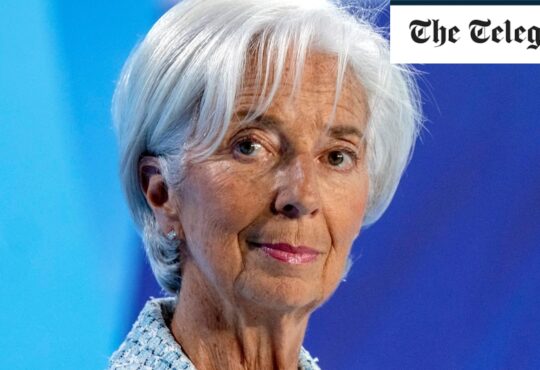
The AAA stalwarts such as Germany or The Netherlands will have no trouble borrowing – yields may fall as recession bites harder – but it is a different story for Club Med debtors. The surge in bond issuance hits just as the ECB launches quantitative tightening and adds another €15bn a month to bond supply.
Worse yet, the ECB has turned ferociously hawkish, signalling a “terminal” interest rate of 3.5pc. This implies a rise in Italian bond yields to circa 6pc, which is courting fate for a country with a public debt ratio near 150pc of GDP.
A southern European bond crisis is the dog that has not barked in this tightening cycle. Markets may have been lulled into a false sense of security, firstly because the ECB has skewed its bond redemptions away from Bunds and into Italian bonds (now played out), and secondly because the ECB has conjured a backstop of sorts with its “anti-spread” tool (TPI).
The TPI is a mirage. It cannot be used unless the eurozone is under extreme stress, otherwise it would be a fiscal rescue in violation of the Maastricht Treaty. The legal details have to be resolved, and the tool appears incompatible with past rulings by the German constitutional court.
Christine Lagarde, the ECB’s president, implicitly admitted this last week that there is a problem when she urged Italy to ratify the EU’s normal rescue fund (ESM), an entirely different animal. Not a single euro of this fund can be lent without the assent of the German Bundestag and under strict conditions. It amounts to a “Greek” fiscal occupation by EU commissars and that is why it has been rejected furiously by the Italian political Right.
Citigroup said France too could suffer from this week’s fall-out, given the scale of Japanese debt holdings and the country’s chronic fiscal deficit.
The Japanese gorged on a quarter trillion euros of French public debt before the pandemic because it offered core eurozone status with 25 basis points of extra yield over Bunds. It was a reasonable calculus. France has always been the beating heart of the Europe project.
However, the risk spread has since widened to 52 points. French political control over the ECB policy-making machinery is slipping away. In October, President Emmanuel Macron rebuked unnamed monetary hawks on the governing council for responding to an imported inflation shock by throttling internal demand. The ECB ignored him.
France’s total public and private debt has risen by 70 percentage points to 351pc of GDP over the last decade (BIS data), compared to 276pc for Italy, and 271pc for the UK.
S&P Global put the country on negative watch this month, warning of “rising risks to France’s public finances” and lack of structural reform. It said the debt ratio will still be 111pc of GDP in 2025.
For whatever reason, the Japanese have been running down their French bond portfolio at a rapid clip. The pace of liquidation is now likely to accelerate.
France has great strategic depth and will muddle through whatever happens but the real cost of fiscal insouciance is rising fast.
The UK has already learned the hard way that there is no margin for political and economic error when the global credit spigot dries up. The eurozone will have its lesson in 2023.





